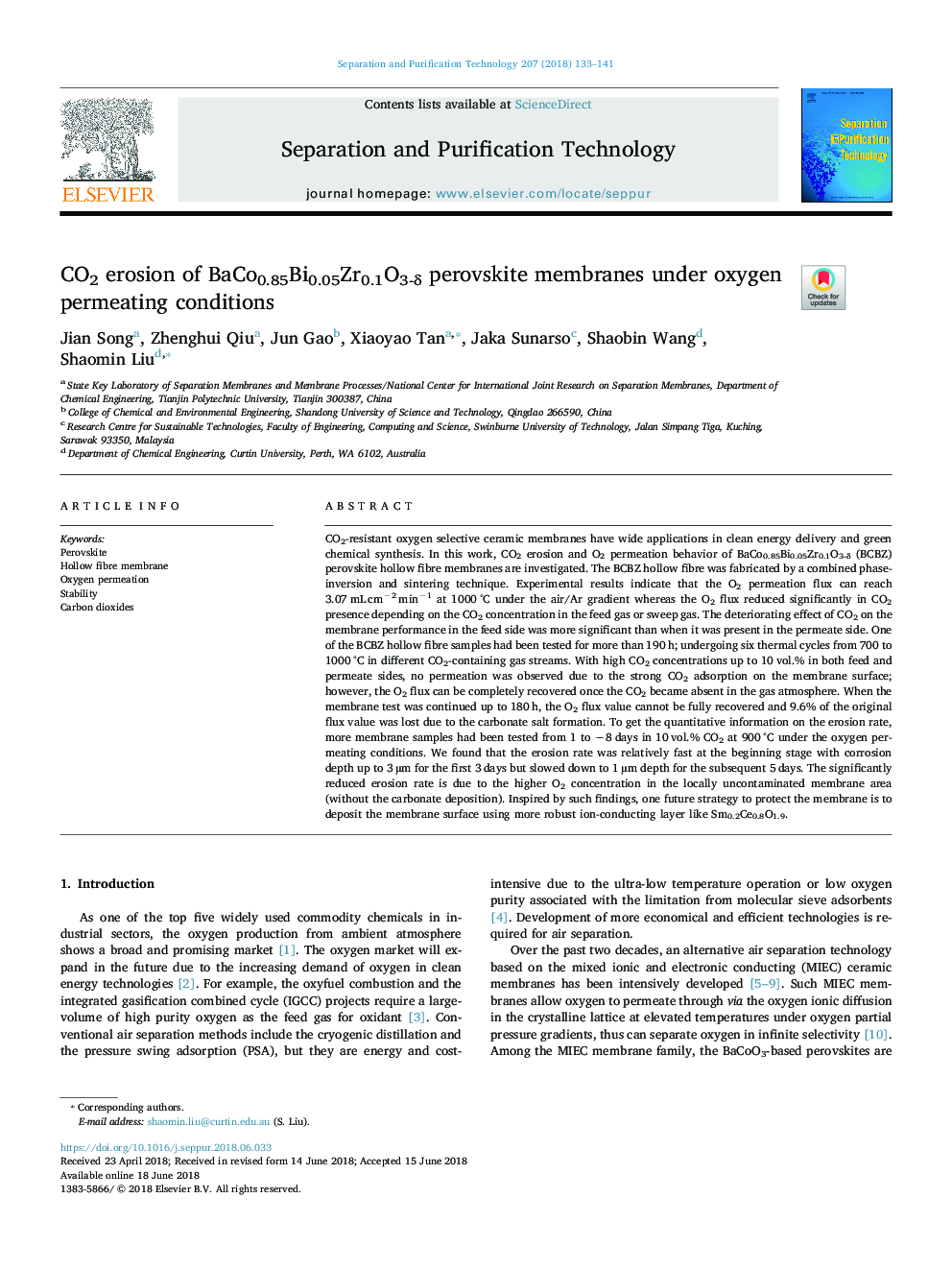| Article ID | Journal | Published Year | Pages | File Type |
|---|---|---|---|---|
| 7043525 | Separation and Purification Technology | 2018 | 9 Pages |
Abstract
CO2-resistant oxygen selective ceramic membranes have wide applications in clean energy delivery and green chemical synthesis. In this work, CO2 erosion and O2 permeation behavior of BaCo0.85Bi0.05Zr0.1O3-δ (BCBZ) perovskite hollow fibre membranes are investigated. The BCBZ hollow fibre was fabricated by a combined phase-inversion and sintering technique. Experimental results indicate that the O2 permeation flux can reach 3.07â¯mLâ¯cmâ2â¯minâ1 at 1000â¯Â°C under the air/Ar gradient whereas the O2 flux reduced significantly in CO2 presence depending on the CO2 concentration in the feed gas or sweep gas. The deteriorating effect of CO2 on the membrane performance in the feed side was more significant than when it was present in the permeate side. One of the BCBZ hollow fibre samples had been tested for more than 190â¯h; undergoing six thermal cycles from 700 to 1000â¯Â°C in different CO2-containing gas streams. With high CO2 concentrations up to 10â¯vol.% in both feed and permeate sides, no permeation was observed due to the strong CO2 adsorption on the membrane surface; however, the O2 flux can be completely recovered once the CO2 became absent in the gas atmosphere. When the membrane test was continued up to 180â¯h, the O2 flux value cannot be fully recovered and 9.6% of the original flux value was lost due to the carbonate salt formation. To get the quantitative information on the erosion rate, more membrane samples had been tested from 1 to â8â¯days in 10â¯vol.% CO2 at 900â¯Â°C under the oxygen permeating conditions. We found that the erosion rate was relatively fast at the beginning stage with corrosion depth up to 3â¯Âµm for the first 3â¯days but slowed down to 1â¯Âµm depth for the subsequent 5â¯days. The significantly reduced erosion rate is due to the higher O2 concentration in the locally uncontaminated membrane area (without the carbonate deposition). Inspired by such findings, one future strategy to protect the membrane is to deposit the membrane surface using more robust ion-conducting layer like Sm0.2Ce0.8O1.9.
Related Topics
Physical Sciences and Engineering
Chemical Engineering
Filtration and Separation
Authors
Jian Song, Zhenghui Qiu, Jun Gao, Xiaoyao Tan, Jaka Sunarso, Shaobin Wang, Shaomin Liu,
